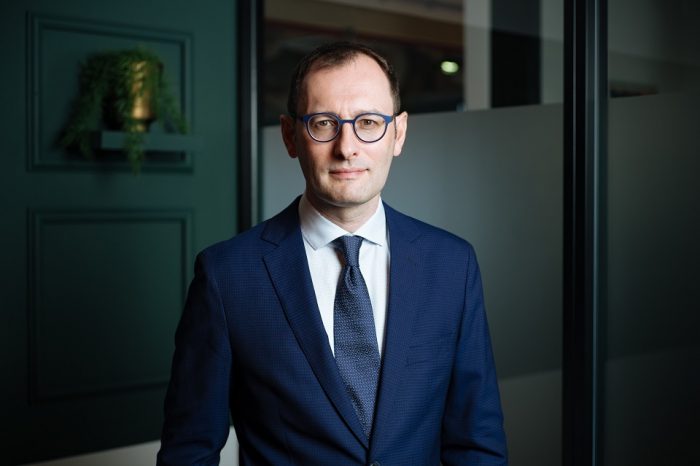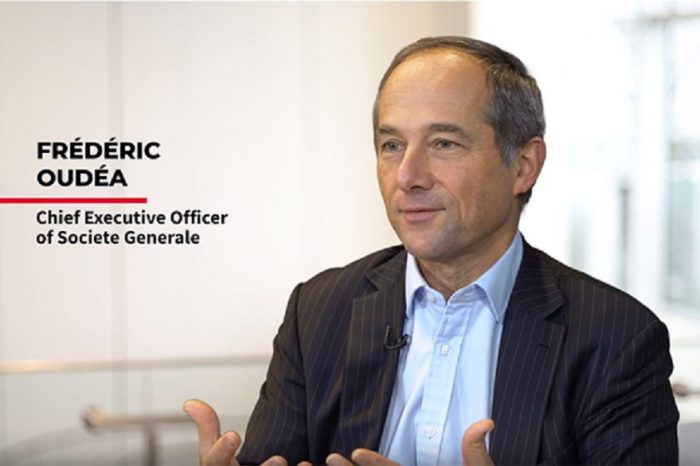Guillaume Macczak, Associate Partner CFO & GBS Services, EY: The investment in sustainable initiatives must become a reality

In recent interview, Guillaume Macczak, Associate Partner CFO & GBS Services, EY, offered Outsourcing Today several opinions regarding the investment sentiment in the business shared services market, respectively BPO and SSC markets.
Within the overall perspective, “the main driver for investments in Romania, induced by the crisis, is cost reduction. It existed before but there is clearly an acceleration of plans Group communicated on few years ago. High pace of digitalization combined with needs to preserve cash are driving the changes pushed from Western Europe or US to Romania and neighbor countries,” says the EY’s partner. According to Guillaume Macczak, “as a country, this is a great opportunity for Romania to develop the Services part of its economy, as well as reinforcing its industrial capabilities.”
Read the full interview below:
From EY’s perspective, how did the investment appetite of companies for Europe/ especially Romania change so far and what industries are the most appealing right now?
We observed during the second quarter interest from some European and US companies to study the possibility to invest in the region or bring back some activities from Asia. This movement was already discussed before the crisis because of GDPR constraints and other local regulations in EU.
From a Central & Easter Europe perspective, Romania seems to be very attractive to investors compared to “usual suspects” in the region (e.g. Poland, Hungary, Czech Republic, Bulgaria). Indeed, costs of personnel are still low from an EU perspective, multiple cities have a great talent pool across the country, with local specifics (sectors, language, proximity to sea or Danube).
Discussions engaged and studies lead with international groups are around two topics: Cost reduction by the creation of Shared Services Centers (SSC) or extension of current capabilities, and investments in production facilities such as De’Longhi in Mădăraş or Haier Group who reported 50 MEUR investments in Prahova county.
There is a priori no specific industry in this movement, or said differently, all industries are studying this kind of scenario.
Which are today’s main factors targeted by investors when they are looking for new investments in countries such as Romania? What would be Romania’s main competitiveness advantages?
The main driver for investments in Romania, induced by the crisis, is cost reduction. It existed before but there is clearly an acceleration of plans Group communicated on few years ago. High pace of digitalization combined with needs to preserve cash are driving the changes pushed from Western Europe or US to Romania and neighbor countries.
As a country, this is a great opportunity for Romania to develop the Services part of its economy, as well as reinforcing its industrial capabilities.
But looking at Romania from a cost only point of view would be a mistake in my opinion. Romania has a very young and qualified workforce available, an openness to change and a very quick pace of adaptation. On top of IT and communication infrastructure and expertise, this is a real advantage in a transformation / digitalization plan.
Looking forward to the future, we can also bet that Romania cost of labor will be less and less attractive. Therefore, the capacity of the country to deliver efficient and qualitative work will make the difference.
An emerging interest from investors is the capacity to invest in a sustainable, environment-friendly manner. In this optic, recent announcements by the Government for the 10 years recovery plan could be of great support.
Which are the main concerns of investors right now?
This is unfortunately something that has not changed so much in the past 5 years.
First, political and fiscal stability (or predictability) is key for investors. We saw in the recent history some political risks or changes that could harm the business of foreign investors in the region. So, elections to come at the end of 2020 will be a decision factor when it comes to choosing a location in Central and Eastern Europe.
For investors who are already in Romania, another concern could be the possibility to scale up on some functions. We observe some bottlenecks in areas like Finance or IT where the number of graduated students may not be enough to cope with the demand.
Finally, I think the 25-26% rate in people turnover can be a difficult discussion point. This is not specific to Romania but to the industry in the region. Still this reduces the appetite of investors. Showing that despite this, the sector can be resilient and efficient is a challenge. EY Romania estimated the total cost of attrition in the private sector to be 2.4 Billion euros per year. It’s an average of 630 EUR per existing employee. This figure can be discussed and challenged but it remains that it’s a lot of money not going to employees staying, investments and other initiatives.
I surely see my role in EY as supporting our clients with tailormade solutions, mostly digital, to reduce uncertainty, complexity and costs around those topics.
How did the specific investment intentions changed regarding the BPO and SSC markets? What is to be expected in Romania, regarding the two business shared services’ segments?
For SSC, at the early stage of the crisis, especially with the lockdown, transfers of activity from one country to another without travel was a clear and expressed concern in the discussions we had. Since April, EY is in capacity to offer its clients a fully remote and digital experience for such projects.
Additionally, we observe more and more companies willing to combine nearshoring and transformation in the same roadmap with project timelines not exceeding one year. The horizon shortened from this perspective due to the pressure on cost and the fact that digitalization remains a capital consuming transformation. This is our role to being able to provide such combined solutions which are low risk for groups but still feasible in good conditions for Romanian employees.
For BPO market, an additional question is their dependency to Asia, especially to India or Philippines where there were clear difficulties to keep production running during lockdown.
For both markets, it will be very important to rethink their resilience. When previous plan was to cover each other in case one was shutting down, now they must consider the possibility all locations can be unable to perform at the same time. This could have impacts in the operating models of BPO and SSC, in favor of Romania.
What measures and what can be improved at the level of country to attract more investments in Romania?
If we compare with other countries like Poland, Hungary and Czech Republic, Romania seems to be a bit behind in its capacity to “sell” the country as a good destination for investors. It would be a very good investment from my point of view to reinforce agencies like InvestRomania where Business Shared Services are not even flagged as a strategic sector (http://investromania.gov.ro/web/doing-business/). Unfortunately Chambers of Commerce can help but maybe not provide all requested services. Therefore, consulting firms are the main solutions but create an entry barrier for smaller investors. To palliate this, we created at EY some information packs to inform investors for free on main aspects of doing business in Romania (Geography, Talents, Tax and Legal topics, etc).
Another topic, maybe not on the top list of Business Shared Services professionals but still creating a reputational handicap is the lack of transportation infrastructure, or the quality of existing ones in some regions. If BPO and SSC are not depending so much on intercity transportation, this can limit the mobility of employees. Inside cities, there is also a challenge in dealing with the high number of cars circulating. Here is maybe the main benefit of the recent lockdown: Increasing the remote work capabilities and validating its performance, allowing companies to review their vision on the topic.
Finally, as announced in the Government Recovery Plan, the investment in sustainable initiatives must become a reality. This would support companies and the country taking a competitive shortcut when compared to Western countries. Romania has the talent and the energy to lead such a transformation.
















